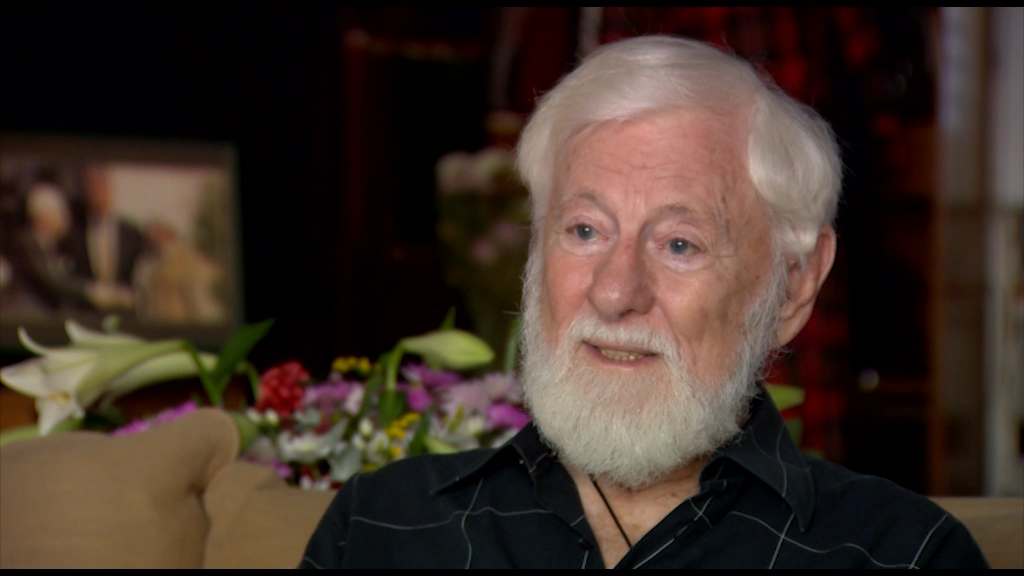NEXT STORY

Photography was an integral part of the magazine
RELATED STORIES

NEXT STORY

Photography was an integral part of the magazine
RELATED STORIES


|
Views | Duration | |
|---|---|---|---|
| 61. Saving Haaretz from closure | 13 | 02:26 | |
| 62. Running HaOlam HaZeh on a shoestring budget | 15 | 03:53 | |
| 63. My book brings me fame | 11 | 03:08 | |
| 64. Naked girls in, Ben-Gurion out | 18 | 03:51 | |
| 65. I invented the back cover | 15 | 02:49 | |
| 66. Photography was an integral part of the magazine | 13 | 03:11 | |
| 67. HaOlam HaZeh v. IDF and the Establishment | 13 | 04:53 | |
| 68. The ethnic demon | 14 | 03:16 | |
| 69. Uprising of the Mizrachi Jews | 15 | 03:09 | |
| 70. Who is the real enemy? | 17 | 03:01 |


HaOlam Hazeh went through hard times; distribution figures began to fall, and truthfully I watched the distribution every week, because the very existence of the paper depended on this. In the late 1950s we had a tough period, and then I started to think what would help to sell the paper? The paper was on sale in the kiosks, people could see the cover, and if they liked it they bought it. HaOlam HaZeh never really had subscribers. It sold at the news-stands. Then I had an idea: I had a problem with the back cover of HaOlam HaZeh. I did not know how to fill it, and we used all kinds of options: quizzes, humorous sections, but it was wasted space. Why not make a second cover? A newspaper schematically consists of two parts, and each part has a cover. Then I invented this global invention of a back cover, and the back cover of HaOlam HaZeh became a concept. I personally did not really care if people read HaOlam HaZeh from the front cover to the back, or from the back cover to the front. HaOlam HaZeh had a problem which effectively remained until the end: it was very expensive. Why? This was a vicious circle.
HaOlam HaZeh lived for a week. Let's say we have 17 apartments in this building. It was sufficient for one person to buy, let's say on the first floor, then that edition would be handed around from one to the other. And it remained that way until the end. We investigated it and discovered that a single copy would pass between 10 to 15 families. This meant that we had to charge a higher price. The higher price meant that people shared the paper, and this started the vicious cycle that we could not extricate ourselves from, and it remained that way until the end.
"העולם הזה" היו לו תקופות קשות, שהתפוצה התחילה לרדת, ואני ממש עקבתי אחרי התפוצה בכל שבוע, מפני שקיומו של העיתון היה תלוי בזה. בסוף שנות ה-50' הייתה לנו תקופה קשה, ואז התחלתי לחשוב מה מוכר את העיתון? העיתון תלוי בקיוסק, ואנשים רואים את השער, ואם זה מוצא חן בעיניהם, הם קונים. ל"העולם הזה" אף פעם לא היו מינויים ממש. הוא נמכר בקיוסק. ואז היה לי רעיון: בשער האחורי של "העולם הזה" יש לי בעיה. לא ידעתי איך למלא אותו, ושמנו שם כל מיני דברים - חידונים, מדורים הומוריסטיים ודברים כאלה - זה בזבוז. למה שלא נעשה שער שני? עיתון מורכב באופן סכמטי משני חלקים, ניתן שער לכל חלק. ואז המצאתי את ההמצאה העולמית הזאת של השער האחורי, והשער האחורי של "העולם הזה" הפך למושג. לי אישית ממש לא היה איכפת אם אנשים קראו את "העולם הזה" מהשער הקדמי, עד לאחורי, או מהשער האחורי עד לקדמי. הייתה ל"העולם הזה" בעיה והיא נשארה למעשה עד הסוף: "העולם הזה" היה מאוד יקר. למה? היה מעגל קסמים.
"העולם הזה" חי שבוע. אז יש לנו בבית הזה 17 דירות, מספיק היה שאחד קנה, נגיד בקומה אל״ף, ואז הגיליון במשך השבוע נדד. וזה נשאר ככה עד הסוף. חקרנו את זה ומצאנו שגיליון אחד עובר בין עשר עד חמש-עשרה משפחות. זה גרם לכך שהיינו צריכים לקחת מחיר גבוה. המחיר הגבוה גרם לכך שאנשים התחלקו בגיליונות, ומעגל הקסמים הזה, שלא הצלחנו לצאת ממנו, נשאר עד הסוף.
Uri Avnery (1923-2018) was an Israeli writer, journalist and founder of the Gush Shalom peace movement. As a teenager, he joined the Zionist paramilitary group, Irgun. Later, Avnery was elected to the Knesset from 1965 to 1974 and from 1979 to 1981. He was also the editor-in-chief of the weekly news magazine, 'HaOlam HaZeh' from 1950 until it closed in 1993. He famously crossed the lines during the Siege of Beirut to meet Yasser Arafat on 3 July 1982, the first time the Palestinian leader ever met with an Israeli. Avnery was the author of several books about the Israeli-Palestinian conflict, including '1948: A Soldier's Tale, the Bloody Road to Jerusalem' (2008); 'Israel's Vicious Circle' (2008); and 'My Friend, the Enemy' (1986).
Title: I invented the back cover
Listeners: Anat Saragusti
Anat Saragusti is a film-maker, book editor and a freelance journalist and writer. She was a senior staff member at the weekly news magazine Ha'olam Hazeh, where she was prominent in covering major events in Israel. Uri Avnery was the publisher and chief editor of the Magazine, and Saragusti worked closely with him for over a decade. With the closing of Ha'olam Hazeh in 1993, Anat Saragusti joined the group that established TV Channel 2 News Company and was appointed as its reporter in Gaza. She later became the chief editor of the evening news bulletin. Concurrently, she studied law and gained a Master's degree from Tel Aviv University.
Tags: HaOlam HaZeh
Duration: 2 minutes, 49 seconds
Date story recorded: October 2015
Date story went live: 10 March 2017